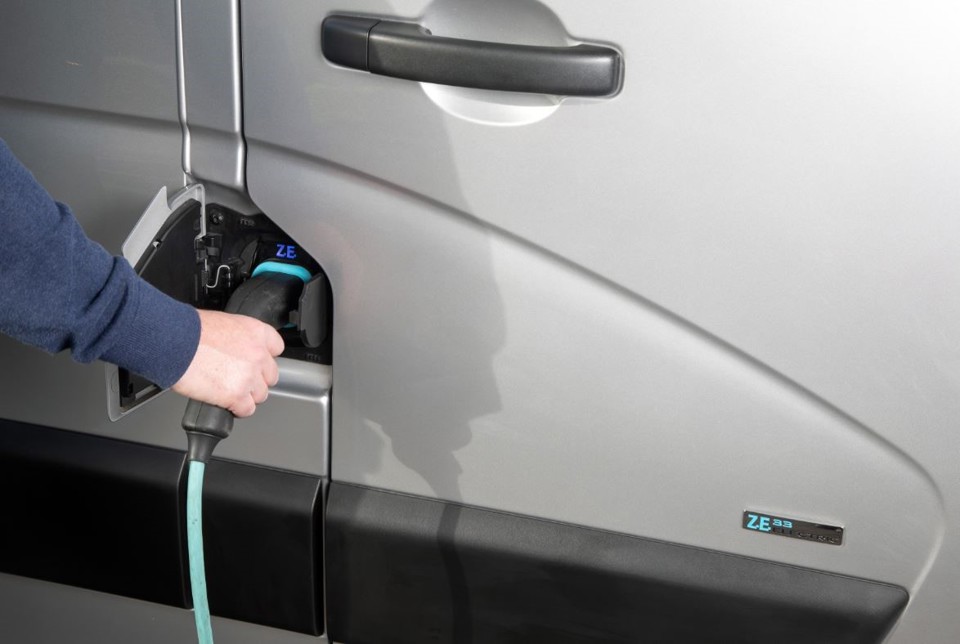Rules around the operation of electric vans remain on the Government’s radar and promised legislation should be submitted to Parliament later this year.
That’s according to Abdul Chowdhury, head of the vehicle policy team at the Office for Zero Emission Vehicles (OZEV).
The Government announced in October, 2023, that the additional five-hour training requirement for drivers would be removed for electric vans weighing up to 4.25 tonnes.
It also promised to make changes to towing allowances and broaden the flexibility to cover all vehicle types, beyond goods vans, recognising that further measures were needed to support their uptake.
However, six months after making the announcement, the Department for Transport (DfT) told Fleet News last month that legislation required to change the rules had not yet been introduced.
In an update this week, Chowdhury reassured fleets that issues around the operation of electric vans were high on the Government’s agenda.
“I’m currently working on the legislation and hope to take that through Parliament this year,” he told delegates at the Association of Fleet Professionals (AFP) annual conference.
Chowdhury also highlighted how OZEV is working to change rules around operator licensing for 4.25t electric vans and MOT requirements, as well as drivers' hours, tachograph rules and speed limiters.
An electric van weighing more than 3.5t is still classed as an HGV and as such requires an MOT test after 12 months. It is also speed restricted, while tachograph regulations come into effect if the vehicle travels more than 100kms from base.
There are further layers of complication. For fleets operating in Northern Ireland, the 4.25t exemptions stop at the border for those travelling from the north into the south and the vehicle needs to be covered by an international O licence.
Chowdhury said: “The challenge with all of this is that each of these rules are ingrained in different parts of legislation so we need to do an assessment for each one.
“The number one priority from a Government perspective is to make sure that any changes we make do not have a negative impact on safety.”
He explained: “4.25 tonne vehicles look and feel and smell like a 3.5 tonne vehicle, however, the mass is larger so if they are involved in an incident, basic physics says that there would be a larger impact and the incident would be worse than a 3.5-tonne vehicle being involved in an incident.”
He added: “We’re continuing to gather the evidence but look out for some news in this space in the coming weeks and months.”
Despite recent registration figures showing how the uptake of electric vans is falling short of the 10% zero emission vehicle (ZEV) mandate target – battery electric vans accounted for just 3.6% of all new LCV registrations in April, Chowdhury remains optimistic about electric van uptake.
Plug-in EV grants

Chowdhury (pictured above) told delegates that the Government's approach to electrifying vehicles has been three pronged.
“We’ve spent over £2 billion in trying to get the UK to transition to zero emission vehicles,” he said.
“Firstly, offsetting the higher upfront costs of electric vehicles. Secondly, accelerating charge point rollout... and then finally, creating a regulatory framework that really supports the zero-emission vehicle transition.”
In offsetting higher upfront costs for electric vehicles, the plug-in van and grant trucks are in place until March 2025. However, with the plug-in car grant ending in 2022 and private new EV sales flagging, Chowdhury defended the Government’s approach.
“The intention for these grants are to really kickstart the market and give the early transition a helping hand,” he said.
“The car market has made huge progress over the last 10 years and that’s why it came to a conclusion recently.
“The other markets that still need that little bit of a helping hand are around vans and trucks, wheelchair accessible vehicles, taxis and motorcycles and those grants continue to exist (until March 2025).”
Chowdhury also highlighted how the public charging infrastructure has grown over the past year, with a range of Government grants also enabling growth in on-street and workplace charge points.






















Login to comment
Comments
No comments have been made yet.